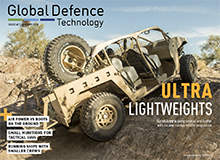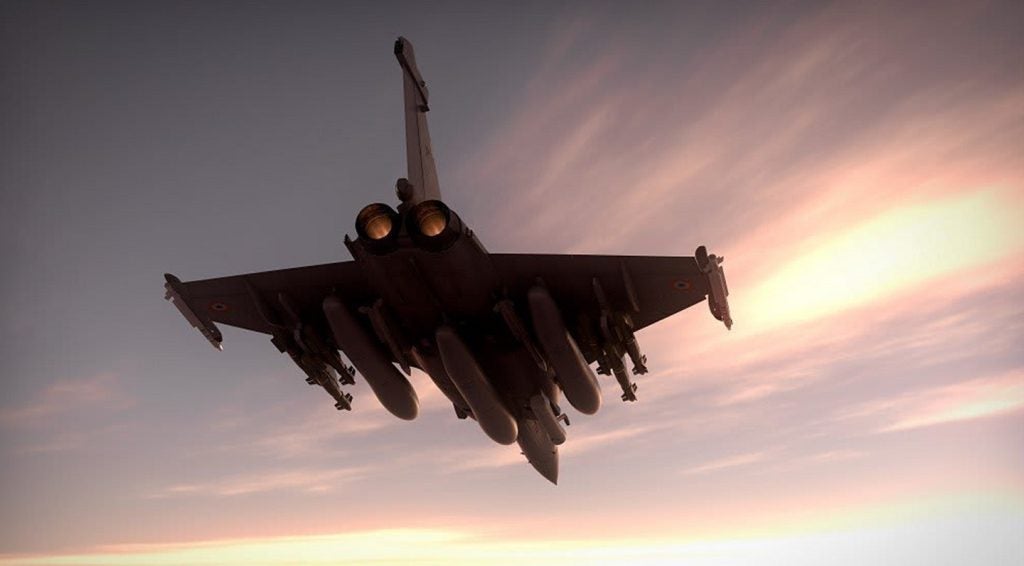
The overwhelming firepower unleashed by US aerial assets against Islamic State in Iraq last year has slowed the operational tempo of IS, but officials have admitted that air strikes wouldn’t weaken the group substantially. While the US has strictly ruled out deploying ground troops to the region, we ask whether air power alone, without the support of ground troops, is enough to win a war.
We also take a look at the contenders for the US Army’s ultra-light combat vehicle programme chart a timeline of attempts to develop nuclear powered military aircraft from Cold War-era experiments to Lockheed Martin Skunk Works’ nuclear fusion concept, and find out how the US Air Force is boosting morale among its nuclear weapons technicians with a new service medal.
Moreover, we find out how missile manufacturers are trying to bring down the operational costs of counter-insurgency missions by equipping tactical UAVs with small munitions, take a look at the advanced systems that allow today’s naval vessels to be operated by ever smaller crews and investigate the security implications of a growing trend of ship operators disappearing from view by manipulating their vessels’ automatic identification system data.
In this issue
Air Power Vs Boots on the Ground
The US has strictly ruled out deploying ground troops to Iraq or Syria in the fight against Islamic State and is instead relying exclusively on airstrikes. Grant Turnbull asks whether the use of air power is enough to win a war.
Click here for the full article.
How well do you really know your competitors?
Access the most comprehensive Company Profiles on the market, powered by GlobalData. Save hours of research. Gain competitive edge.

Thank you!
Your download email will arrive shortly
Not ready to buy yet? Download a free sample
We are confident about the unique quality of our Company Profiles. However, we want you to make the most beneficial decision for your business, so we offer a free sample that you can download by submitting the below form
By GlobalDataFlyweights in the Ring
After years of enhancing survivability through heavy armour, the US Army is seeking a new lightweight armoured vehicle that can be carried by helicopter or air-dropped from transport aircraft. Berenice Baker reviews the candidates for the ultra-light combat vehicle programme.
Click here for the full article.
Fission to Fusion
In the wake of Lockheed Martin’s Skunk Works unveiling plans for a compact nuclear fusion generator that could power everything from aircraft to naval vessels, Berenice Baker explores the concept and reviews previous experiments with nuclear powered aircraft by American and Russian militaries
Click here for the full article.
Medals for Morale
In the modern military landscape, nuclear weapons technicians are put under extreme duress. Berenice Baker looks into a new Nuclear Deterrence Operations Service Medal that US Air Force officials hope will raise morale
Click here for the full article.
Small Bombs, Big Effect
UAVs have proved a cost-effective way of providing vital intelligence to troops on the ground. Grant Turnbull finds out how new technology could soon equip these tactical UAVs with mini precision-guided weapons
Click here for the full article.
Less is More
Doing more with fewer crew members has become the mantra of today’s budget-squeezed navies. Berenice Baker takes a look at the latest bridge, mission, navigation and remote weapons systems making ship control a one-stop-shop
Click here for the full article.
Going Dark
Research has found that data from automatic identification systems, used to track maritime activity, is increasingly being falsified by ship operators trying to disguise their identity, location or destination. Grant Turnbull investigates the security implications of this growing trend
Click here for the full article.
Next issue preview
The NATO DCIS project provides the NATO Rapid Reaction Force with a deployable comms system to enable them to communicate in remote terrains when network reliability and security are an issue. We take a look at a compact, portable version of DCIS that was launched recently.
We also find out how Raytheon’s Raven platform is bringing big data processing power to a laptop for intelligence analysts in the field.
We also look into DARPA’s call for a "flying aircraft carrier" that can launch multiple small UAS, review the latest milestones in the F-35 programme including take-off and landing testing on the USS Nimitz carrier and find out what the US Navy is doing to alleviate stress for crews during long missions at sea.
Digital magazine FAQ
Global Defence Technology is available on the iPad and as a free desktop version*. You can download our app or read the latest issue here.
View the archive of back issues.
Sign up for your subscription here.
*Browser compatibility: The desktop version can be viewed in the latest two version of Chrome, Firefox and Safari, as well as in Internet Explorer 9 and 10. Some features may not be compatible with older browser versions.







